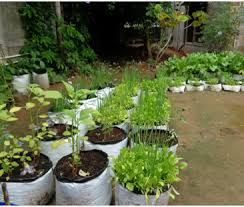Do you wish you had more room to plant your beloved leafy vegetables? If you want to experience the satisfaction of growing your own leaf greens and herbs, don’t let space deter you. Before I went on a shopping trip with my friend Jenifer to pick up flower pots and soft sacks, from which she likely incised part of her green gems in her backyard, I often wondered where senior sous-chefs got the ingredients that spiced most of the dishes that we couldn’t easily find in the market.
This isn’t magic as I once thought, but it’s a game-changing tactic that I notice we all could make depending on your kitchen taste.
A kitchen garden can be as small as a few square feet, a thriving patch of land in the backyard of your house, but even in small spaces like containers made from large water bottles and soft sacks, soft plantations can healthily grow on your balcony or verandas.
Traditionally, one’s vegetable side-garden was considered a mark of pride and necessity in the home. This was a source of pride for every auntie and grandmother, with a piece of healthy fresh amaranth (dodo greens), sukuma wiki (collard greens), green onions, carrots, eggplants, mint herbs, and rosemary herbs, among others.
When you have some extra room, plant some herbs and vegetables to use in your cooking.
However, instead of growing flowers, you plant delicious vegetables, setting them out in the smallest space available.
Setting up a kitchen garden can be a fun and rewarding experience. Here are some basic steps to get you started:
- Choose a location. The kitchen garden should get at least six hours of sunlight per day. It should also be in a well-drained spot.
- Prepare the soil. The soil should be loose and fertile. If the soil is poor, you may need to add compost or other organic matter.
- Choose the right plants. Consider the amount of space you have, the climate you live in, and the types of vegetables you like to eat. Some good options for beginners include tomatoes, cucumbers, lettuce, carrots, Sukuma wiki, and herbs.
- Plant the seeds or seedlings. Follow the instructions on the seed packet or seedling container.
- Water regularly. The plants need to be watered deeply and regularly, especially during hot weather.
- Fertilise as needed. You may need to fertilise the plants every few weeks, depending on the type of plant and the soil quality.
- Weed regularly. Weeds compete with the plants for water and nutrients.
- Protect from pests and diseases. There are many ways to protect your plants from pests and diseases. Some common methods include planting resistant varieties, rotating crops, and using organic pesticides.
- Harvesting. Harvest the vegetables when they are ripe.
